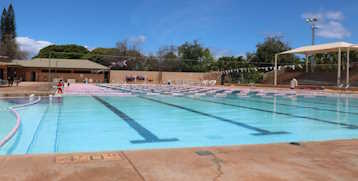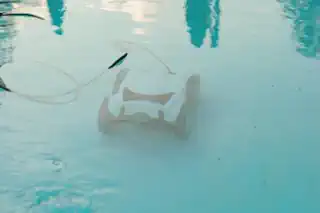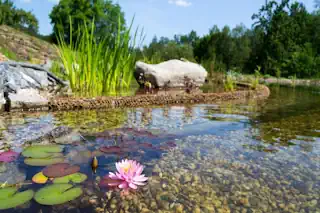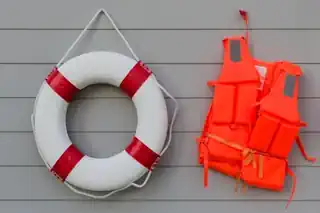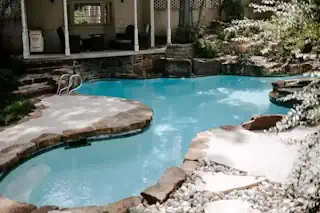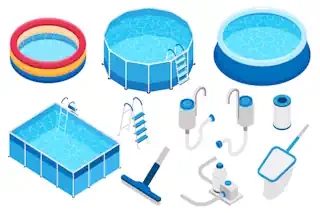A Useful Guide to Plunge Swimming Pools: A Refreshing Addition to Your Home
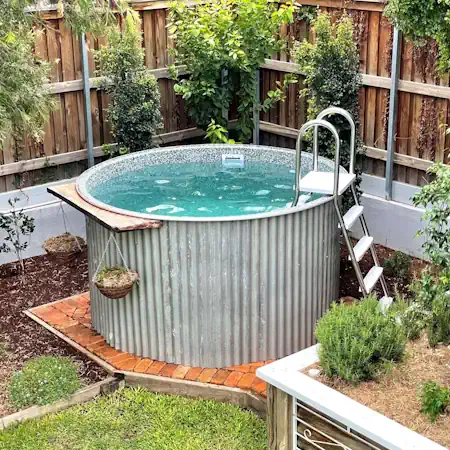
Imagine stepping out into your backyard, the sun shining down on you, as you prepare to take a plunge into your very own swimming pool. This is a daily luxury that used to be reserved for the rich and famous—or at least, those with a significant amount of land for a traditional pool. Today, however, a new trend in home swimming pools is making a splash, quite literally, among homeowners and outdoor enthusiasts alike: plunge pools.
This comprehensive guide will not only introduce you to the world of plunge swimming pools but will also detail the many benefits, various design possibilities, sustainability features, and considerations of owning one. We’ll also explore how plunge pools cater to different climates and include real-life case studies, as well as essential tips for those considering this invigorating addition to their home.
The Rise of Plunge Swimming Pools
Recently, there’s been a surge in demand for compact, efficient swimming pools. Homeowners are moving away from the traditional, oversized pools in favor of sleek, space-friendly designs. Plunge pools have transcended mere luxury; they have become a statement piece in outdoor design, showcasing that minimalism can indeed maximize style and function.
What are Plunge Pools?
A Plunge pool is more than just a smaller version of your classic backyard pool or spa. Traditionally, they’re shallower and offer a cool oasis, often designed with built-in seating and heating options. They’re meant for quick refreshing dips or relaxation, rather than long bouts of swimming laps. Their compact size means they can be installed in small urban backyards, on rooftops, and even indoors.
The Benefits of Plunge Pools
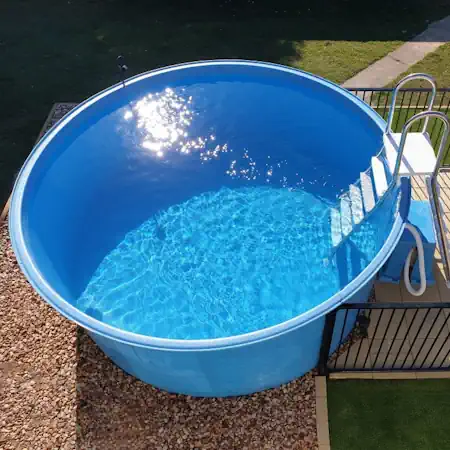
Efficiency
One of the most significant advantages of a concrete plunge pool is its efficiency. It requires less water to fill and fewer chemicals to maintain, translating to lower costs and less environmental impact.
Space
Do you dream of a swimming pool but think your home doesn’t have space? Plunge pools defy that notion. Their small size means they can fit into the most confined spaces, bringing the delight of swimming to almost any room in any home.
Health
Plunge pools are excellent for hydrotherapy. Their cooler temperature and built-in jets can be therapeutic for sore muscles and can aid in post-exercise rest and recovery. They are a perfect solution for water aerobics, stretching, or just lounging.
Aesthetics
Despite being compact, plunge pools can create a serene focal point in any other outdoor space or indoor space. Their custom-designed features and surrounding landscapes make them as beautiful to look at as they are enjoyable to use. Many homeowners with limited space but wanting a pool will love the aesthetics of these smaller pools.
Design and Customization
The versatility of plunge pools allows for numerous design possibilities. Whether you prefer a sleek, modern look or a more natural aesthetic, you can customize your plunge pool to fit your vision.
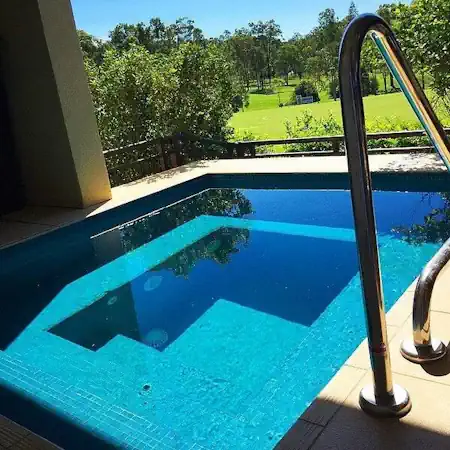
Versatility in Various Home Settings
Plunge pools can be tailored to harmonize with any style of home or landscape, making them a versatile choice for potential owners. Their minimalistic design can blend with contemporary architecture or stand out as a unique feature in a more traditional setting.
Sustainability and Energy Efficiency
With the growing focus on environmental conservation, the sustainable aspects of these plunge pools tend to make them an attractive choice for eco-conscious consumers.
Environmentally Friendly Options
Plunge pools can utilize eco-friendly heating systems and water-saving equipment, such as rainwater harvesting and natural filtration systems.
Energy-Efficient Accessories
LED lighting, solar-powered pumps, and regular covers to prevent heat loss contribute to the overall energy efficiency of a plunge pool.
Maintenance and Cost Considerations
While the initial cost of a plunge pool may be less than that of a larger pool, it’s essential to consider ongoing maintenance and operational costs.
Realistic Look at Ownership
From filters and pumps to the cost of water, electricity, and chemicals, owning a plunge pool requires an ongoing investment. Their small size means less upkeep, less chemicals, and less maintenance but plunge pools require maintenance just the same. We’ll guide you through planning for these factors.
Top 5 Maintenance Considerations for Plunge Pools
Water Quality Management: Ensuring your plunge pool’s water remains clean and clear is paramount. Regular testing and balancing of pH levels, as well as the use of appropriate chemicals, are essential to prevent algae and bacteria growth.
Filtration System Upkeep: A well-functioning filtration system is crucial for maintaining the clarity and cleanliness of the water. Regular checks and cleaning of the filter are necessary to keep the system running efficiently.
Seasonal Care and Winterization: In colder climates, preparing your plunge pool for winter can prevent damage caused by freezing temperatures. This includes draining the pool, protecting it with a cover, and winterizing the plumbing.
Surface Cleaning and Maintenance: The pool’s interior surface requires regular cleaning to remove debris, dirt, and potential stains. This not only keeps the pool visually appealing but also extends its lifespan.
Regular Inspection of Equipment: Periodic inspection of pool equipment, including pumps, heaters, and jets, ensures everything is in working order. Timely repairs or replacements can save costs in the long run and prevent significant malfunctions.
Plunge Pools for Different Climates
Plunge pools aren’t just for sunny, tropical locales. We’ll explore how these pools can be enjoyed across different climates and weather conditions.
Year-Round Enjoyment
With the right equipment and setting, an above-ground plunge pool can be used all year. In colder climates, heaters can warm the water, turning your plunge pool into a hot tub alternative in the winter.
Tips for Buying or Building
If after reading this guide, you’re convinced a plunge pool is the right choice for you, these tips will help you through the process of buying or building one.
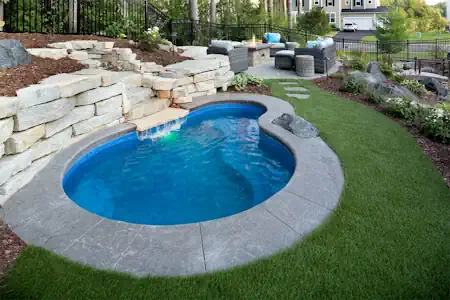
Top 10 Tips for Buying or Building a Plunge Pool
Identify Your Purpose: Understand whether you want a plunge pool for relaxation, aesthetics, or hydrotherapy to guide your design and feature choices.
Consider Your Space: Evaluate the available space in your yard, rooftop, or indoors to determine the best size and shape for your plunge pool. In-ground pool, above-ground pool, or portable pool. There are options to fit almost any space.
Set a Budget: Be realistic about what you can afford, not just for the initial installation but also for ongoing maintenance and running costs.
Choose the Right Materials: Research materials for durability, maintenance needs, and how well they complement your home and landscape.
Look into Heating Options: If you’re planning on using your plunge pool year-round, consider energy-efficient heating solutions.
Investigate Filtration and Sanitization Systems: Opt for systems that are efficient, eco-friendly, and ensure clean, clear water.
Plan for Privacy: Think about fencing, landscaping, or other design elements that can provide privacy in your plunge pool area.
Understand Zoning Laws: Check local regulations and zoning laws to ensure compliance with size, construction, and safety requirements.
Select a Reputable Builder or Supplier: Research and select a contractor or supplier with a solid reputation and experience in plunge pools.
Visualize Your End Goal: Use design software or work with professionals to visualize your plunge pool in your space before finalizing plans.
The Future of Plunge Pools in Home Design
Looking ahead, we predict that plunge pools will continue to gain popularity as people seek sustainable, space-efficient, and lower-maintenance options for enjoying the water at home. They can be ideal additions to your backyard space even in a small backyard.
Integration with Smart Technology
The future might bring plunge pools that are fully integrated with home automation systems, allowing for remote operation and maintenance monitoring.
Call to Action
If you’re considering a plunge pool, or are just fascinated by the idea, this guide provides a useful resource to explore the many facets of making it a reality. Ready to dive in? Start your plunge pool research and take the first step toward transforming your home and lifestyle. Remember, a plunge pool isn’t just a product—it’s a commitment to comfort, health, and a style inspired by you and the way you live.
Frequently Asked Questions (FAQs)
How long does it take to install a plunge pool?
The installation time can vary significantly based on factors such as the type of plunge pool, site accessibility, and weather conditions. Typically, it ranges from a few weeks to several months. Yes, they are small pools but they still require all of the considerations and planning of a bigger pool like a lap pool.
What is the average cost of a plunge pool?
Costs can vary widely depending on size, materials, design complexity, and additional features like heating or lighting. Generally, the price ranges from $10,000 to $20,000 for basic models, with more elaborate designs costing more.
Can plunge pools be installed indoors?
Yes, plunge pools can be installed indoors, offering year-round usage independent of weather conditions. However, additional considerations such as ventilation, humidity control, and structural support need to be addressed.
Are plunge pools suitable for children?
With proper supervision and safety measures like fencing and pool covers, plunge pools can be enjoyed by the whole family, including children.
How energy-efficient are plunge pools?
Plunge pools can be highly energy-efficient, especially when equipped with solar heating, LED lighting, and covers that minimize heat loss. The smaller volume of water also reduces the energy required for heating and filtration compared to larger pools.
Do I need a permit to install a plunge pool?
In most cases, yes. Local regulations and zoning laws usually require a permit for pool installation to ensure safety standards and compliance are met. It’s crucial to check with your local authorities before proceeding.
How do plunge pools contribute to a sustainable lifestyle?
Plunge pools align with sustainable living by requiring less water and energy compared to traditional swimming pools. Eco-friendly options like rainwater harvesting and solar-powered heating further decrease the environmental impact.
Can plunge pools improve property value?
Yes, installing a plunge pool in the ground, can enhance your property’s appeal and potentially increase its market value, especially in regions where outdoor living and wellness are highly valued. Pool ownership always appeals to home shoppers.
What is the difference between a hot tub and a traditional pool?
The primary differences between a hot tub and a traditional pool lie in their size, water temperature, and intended use. Hot tubs are smaller, and designed for soaking and relaxation with heated water, typically featuring jet streams for hydrotherapy. Traditional pools are larger, catering to swimming and exercise with cooler water temperatures. Additionally, hot tubs require less space, can often be installed both indoors and outdoors, and have higher maintenance and operational costs due to heating and hydrotherapy features. In contrast, traditional pools are a large pool and primarily outdoor fixtures, and require more space, and their maintenance focuses on water cleanliness and safety measures.
Remember, thorough research and planning are key to a successful plunge pool installation, from understanding the costs involved to selecting the right design and features that match your lifestyle and budget.
